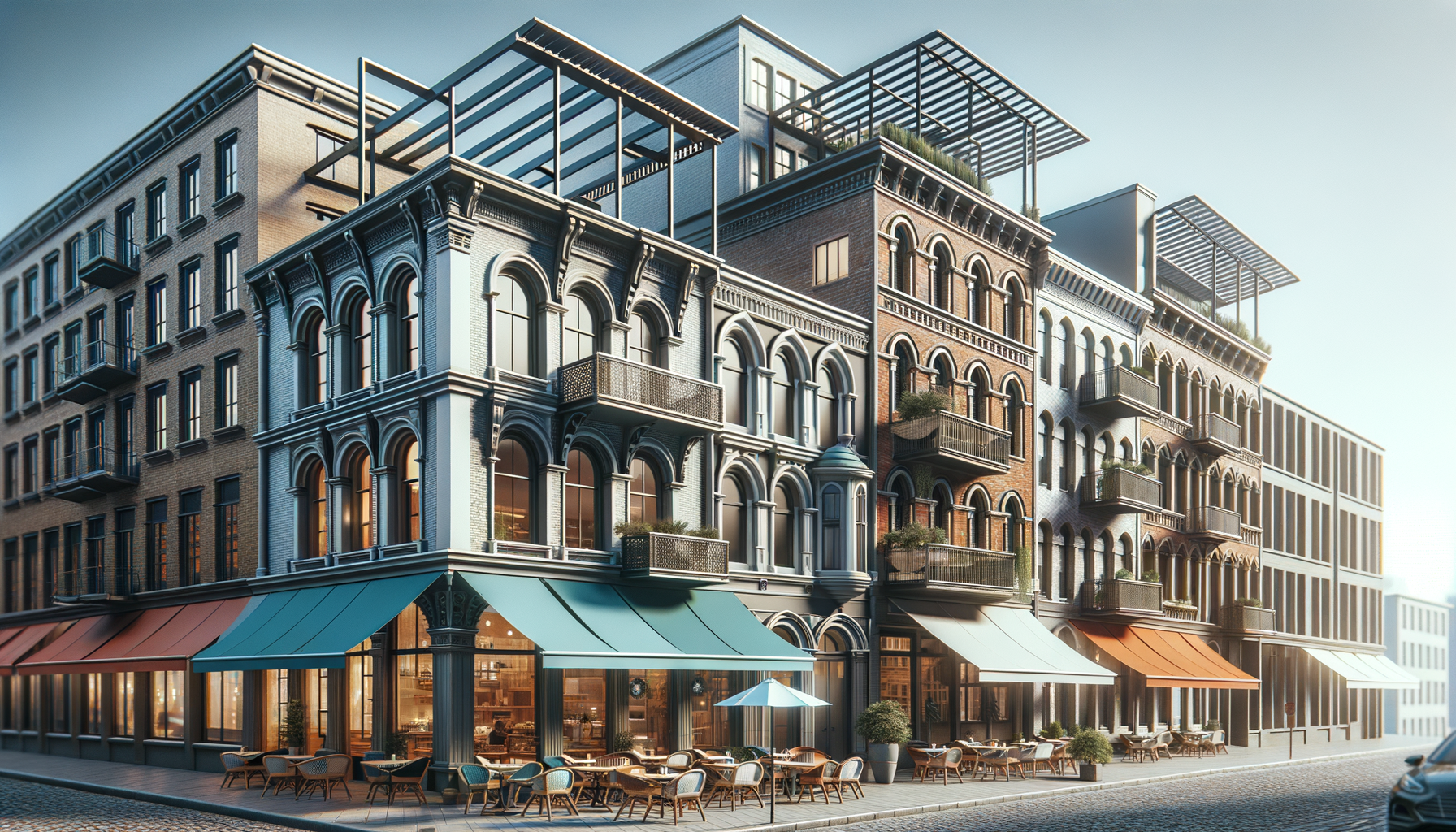The Aesthetic Enhancement of Awnings and Overhangs
Awnings and overhangs have long been celebrated for their ability to transform the visual appeal of a building. These structures serve as an extension of your architectural style, adding layers of depth and interest to facades. By offering a variety of materials, colors, and designs, they allow homeowners and designers to tailor the aesthetic to complement or contrast with the existing architecture. For example, a modern home might benefit from sleek, metallic awnings, while a rustic cottage could be enhanced with wooden overhangs.
Moreover, awnings provide an opportunity to introduce color schemes that can either harmonize with the natural surroundings or make a bold statement. The choice of fabric or material can significantly influence the overall look, with options ranging from vibrant, patterned textiles to minimalist, monochrome finishes. This versatility ensures that awnings and overhangs can cater to diverse tastes and preferences, making them a popular choice for aesthetic upgrades.
Beyond individual homes, these structures contribute to the visual cohesion of neighborhoods and urban spaces. They can unify disparate architectural styles by providing a consistent element across buildings, creating a sense of community and shared identity. The visual impact of awnings and overhangs extends beyond mere decoration; they can elevate the curb appeal and market value of properties, making them a strategic investment for homeowners.
Practical Benefits: Protection from the Elements
While the aesthetic value of awnings and overhangs is undeniable, their practical benefits are equally compelling. One of the primary functions of these structures is to provide protection from the elements. By shielding windows and doors from direct sunlight, awnings can significantly reduce indoor temperatures, leading to energy savings and increased comfort. This reduction in solar heat gain is particularly beneficial during the hot summer months, where cooling costs can soar.
In addition to sun protection, awnings and overhangs offer shelter from rain, allowing outdoor spaces to remain usable even during inclement weather. This feature is especially valuable for businesses such as cafes and restaurants, which can extend their seating areas outdoors without worrying about sudden weather changes. For homeowners, it means being able to enjoy a cup of coffee on the porch or host outdoor gatherings without being at the mercy of the weather.
Furthermore, awnings can protect furniture and flooring from UV damage, prolonging their lifespan and maintaining their appearance. By filtering sunlight, these structures help prevent fading and deterioration, which is a common issue in sun-exposed areas. This protective function underscores the practical appeal of awnings and overhangs, making them a wise investment for both residential and commercial properties.
Energy Efficiency and Cost Savings
Awnings and overhangs play a crucial role in enhancing energy efficiency and reducing utility costs. By providing shade and reducing heat gain, these structures can lower the demand for air conditioning, leading to significant savings on energy bills. According to studies, awnings can reduce cooling energy by up to 25%, making them a cost-effective solution for energy-conscious homeowners.
Moreover, the strategic placement of awnings can optimize natural light, reducing the need for artificial lighting during daylight hours. This not only contributes to energy savings but also creates a more pleasant and natural indoor environment. The ability to control light and heat entry into a building underscores the multifunctional appeal of awnings and overhangs.
In addition to immediate cost savings, the long-term benefits include increased property value and reduced wear and tear on HVAC systems. By decreasing the workload on cooling systems, awnings help extend their lifespan and reduce maintenance costs. This holistic approach to energy efficiency highlights the practical advantages of incorporating awnings and overhangs into building designs.
Extending Usable Outdoor Space
Awnings and overhangs effectively extend the usable space of a property by creating comfortable outdoor areas. These structures provide shade and shelter, allowing for the creation of outdoor living rooms, dining areas, or play spaces that can be used throughout the year. This extension of living space is particularly valuable in urban environments where outdoor areas are limited.
For businesses, awnings can increase the capacity of outdoor seating areas, attracting more customers and enhancing the dining experience. By offering a comfortable and protected environment, businesses can capitalize on outdoor spaces, particularly in regions with favorable climates. The ability to utilize outdoor areas for longer periods can lead to increased revenue and customer satisfaction.
In residential settings, the addition of awnings can transform a simple patio or deck into a functional outdoor retreat. Whether used for entertaining guests or enjoying quiet moments with family, these spaces become more versatile and enjoyable. The expansion of usable space through awnings and overhangs adds value and functionality to properties, making them a popular choice for homeowners seeking to maximize their living areas.
Customization and Technological Advancements
The evolution of awnings and overhangs has been marked by advancements in customization and technology. Modern awnings offer a range of features that enhance their functionality and ease of use. Motorized systems, for instance, allow for effortless extension and retraction, providing convenience and adaptability to changing weather conditions. Some systems even integrate with smart home technology, enabling remote control via smartphones or voice commands.
Customization options extend beyond functionality, with a wide array of materials, colors, and styles available to suit any architectural preference. Whether opting for retractable awnings, stationary overhangs, or innovative louvered designs, the possibilities are vast. This level of customization ensures that awnings and overhangs can meet the specific needs and tastes of any property owner.
Furthermore, advancements in materials have improved the durability and weather resistance of awnings. High-quality fabrics and coatings provide protection against UV rays, mold, and mildew, ensuring longevity and minimal maintenance. These technological and material innovations underscore the evolving appeal of awnings and overhangs, making them a versatile and enduring choice for enhancing outdoor spaces.








